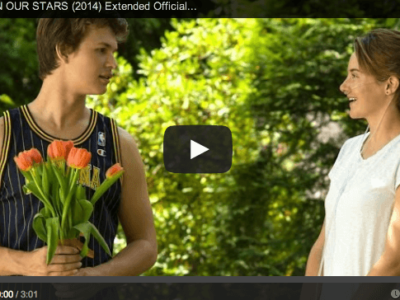“It looks depressing.” “I don’t like being sad.” “The world doesn’t need more tears.”
Poor John Green and Josh Boone. Based on what I’ve been seeing over social media the last few days, I don’t think the general public – mostly those who haven’t read Green’s novel – understands the point of The Fault in Our Stars. Like, at all.
That's an incredibly arrogant statement because it implies I somehow got into Green's mind and know exactly what he was going for with Fault. I know as much about what goes on in Green's crazy head as Jon Snow knows about anything and everything (i.e. nothing).
But, as someone with a fair amount of experience dealing with a loved one's cancer battle, the Fault movie hit me hard. And it also made me feel the need to dispell the notion that Green's love story of two cancer-stricken teenagers is too incoveniently sad for mainstream audiences.
That is not to say that both versions of Fault aren't incredibly emotional. There wasn’t a dry eye (including mine) in my theater when I saw the movie, and those tears were well earned.
But it appears that the novel and Josh Boone’s film adaptation have developed unfair reputations as works designed specifically for the purpose of eliciting tears. Some folks are dismissing Gus and Hazel’s romance as nothing more than a cheap tearjerker on the same level as something Nicholas Sparks would write.
To those people, I have two words for you: grow up.
The Fault in Our Stars may jerk some tears, but by no means is it a sad story. In fact, quite the opposite: it’s a celebration of life’s brevity and unpredictability. It’s a wish-fulfillment story that is smart enough to know that not all teenage dreams play out like a Katy Perry song.
Life is hard. Sad things happen. Things don’t wrap up as tidily as you’d like them to, and even the good times can be underscored by an impending sense of dread. But in the end, you know it was just a privilege to love and be loved.
Cancer isn’t a fun topic, but it can make those afflicted with it – especially the young and impressionable – appreciate carpe diem (seize the day) more than they would otherwise. That’s why Gus works so hard to earn Hazel’s love, and it’s the lesson Hazel learns as their courtship becomes more real.
I won’t spoil any of the finer points of the plot for the uninitiated (who are missing out, just FYI), but for a YA romance, Fault has a lot of twists and turns that accurately represent life’s erratic nature. Again, it’s not sad, but beautiful, knowing that no one would trade the ups and downs for anything.
In all fairness, there are reasons to not want to see this movie. Maybe you don’t like crying in public. Maybe you read the book and realized that Gus’s Manic Pixie Dream Boy doesn’t exist in real life. Or maybe you’re just not that into the romance drama. Cool, that’s your prerogative.
But to not see it because you think it will be “too sad” misses Green’s point entirely.
Shailene Woodley’s Hazel says it better than I can: “I believe we have a choice in this world about how to tell sad stories. On the one hand, you can sugarcoat it. Nothing is too messed up that can’t be fixed with a Peter Gabriel song. I like that version as much as the next girl does. It’s just not the truth.”
Anyone who needs that coat sugared has a bit of maturing to do. If you reject the book or film because you think it’s “too depressing,” you need to get out more and experience life.



















